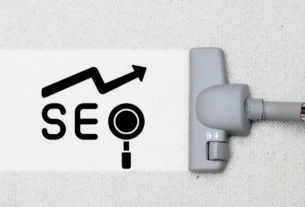Understanding how to bring more traffic to your website requires more than just reading a blog article. It necessitates a thorough grasp of search engine optimization (SEO) and its components, which can be perplexing.
To assist individuals new to SEO in being acquainted with the issue, we have compiled a list of terminology we believe every SEO novice should be familiar with. There are only some things to know about SEO, but it’s a start.
This short course is designed by BITS Institute to provide individuals with a quick and practical way to gain new skills and knowledge in various areas of information technology. This course can range from a few days to a few weeks. They typically focus on a specific topic or skill set, such as SEO Course, web development, data analysis, or cybersecurity.
Here are the top 15 SEO Course phrases that every newbie should understand:
Text for the anchor:
When one inserts a hyperlink into a body of text, the term to which the hyperlink is attached is called anchor text. Users who click on an anchor text are sent to a separate webpage. This is significant for SEO practitioners (see what we did there?) because search engines utilize these links to judge whether websites are more authoritative than others.
Authoritative links are those that search engines consider to be of high quality and provide the most significant value to users; we’ll go over this further later.
Tip: Avoid using the exact anchor text again. This might bring your page down and affect your search results.
Alt Attribute Text (also known as Alt Text):
Have you ever looked for something and then seen an ad with an image of it appear? You’ve probably seen alt text in action.
The written description of an image that indicates what the picture includes is called alt text. When you look at a photo, the alt text is concealed in the webpage’s backend where the image is shown.
Delegated authority:
The capacity of a page to rank high in search engine results is referred to as authority.
Five factors determine authority rank:
- The page’s age
- Page traffic patterns
- Profile of backlinks
- Page content quality Technical SEO (site speed, schema, and so on)
These five arguments explain why “.edu” and “.gov” webpages have more authority than other pages such as “.com” or “.net.”
Bots:
Bots are programs that index, gather, and analyze website information quicker than humans can. These are believed to account for 60% of all web traffic. As SEO professionals, we may employ bots to swiftly acquire and evaluate information from our own and other websites. Bots also enable updated content to be instantly shared with the online community.
Title Tag:
In addition to HTML, title tags are essential for SEO. They assist businesses in correctly describing what their websites include on the search result and browser pages. By optimizing title tags for each page, visitors and search engines can rapidly assess the material on the page, allowing it to be linked and ranked.
Meta Description:
In terms of page description, a meta description comes after a title tag. A phrase or two summarizes what is on that page or website.
The more relevant a meta description is to a search query, the more likely it will display underneath the page title on the search results page. A precise and SEO-friendly meta description will keep your website relevant amid the millions of searches every minute.
Key phrase:
As essential as they may appear, keywords are crucial in SEO Course.
Keywords are words or phrases that may be found on a website. For example, if you wanted to locate this blog through search engine results, the keywords may be “SEO Terms .”These are hardly innovative names, but they are accurate and convey precisely what is on the page. Keywords that are too broad or provide too many results could be more effective.
Long Tail Keyword 8:
Long tail keywords are, as the name indicates, keywords that are lengthier in length. They typically comprise three to four terms that are often utilized during searches. A potential long-tail keyword for this blog article may be “Top 15 SEO Terms” rather than “SEO Terms.” Using the lengthier version helps you target better customers overwhelmed by the number of possibilities provided by a shorter term.
The density of Keywords:
The number of times a term occurs on a webpage about the total number of words is referred to as keyword density. While this used to be a simple technique for pages to rank higher, current search engine algorithms have rendered it nearly ineffective. We can, however, employ the same keyword density-measuring techniques to ensure that we are using the same terms on our website.
Domain Authority or Domain Rank:
Domain authority or domain rank relates to how well a domain will rank in search engine results. On a 100-point scale, it is computed using link metrics: connecting root domains, the total number of links, and others. This measurement may then be used to compare one website against another.
It is one of the most crucial figures that SEOs are aware of. The higher your DA, the more likely you will have high traffic and rank.
Domain Trust:
Domain trust is a metric that measures a website’s connections to other trustworthy websites. As previously stated, these websites include those with a “.edu” or “.gov” ending. If your website contains links to some of these pages, the search engine will see it as more trustworthy. The graphic below shows websites increasing domain trust due to relations from berkeley.edu.
Page Rank or Page Authority:
Page rank or page authority is also measured on a 100-point scale. This is a statistic for how an individual page will rank in search engine results rather than how an entire domain will rate. Because of the intrinsic link between page rank and domain rank, each page on a website should be optimized for SEO.
Do Follow and No Follow:
These words relate to a page’s attribute that determines whether or not link authority is passed on to connected websites. As previously said, the more links a website has, the higher it ranks. When a website has a “No Follow” attribute, that authority is not sent back to the connecting webpage. Websites such as Wikipedia and 90% of blog comments contain a No Follow characteristic. It sends a message to spammers that you will prevent them from sending PageRank to lower-quality “neighbors” on the web.
301 Redirect:
A 301 redirect is a way for a website to notify a search engine that a page location has been permanently relocated elsewhere. This redirect can transfer link authority or ranking power to the new page. 301 redirects might take anywhere from one day to one month for a search engine to pick up.
Canonical URL:
The content of a page is frequently indexed in other locations on the website. This might result in duplicating material on the same website. The canonical URL, on the other hand, is always the most authoritative version. When generating links and ensuring a website’s SEO optimization, we must utilize the canonical URL.




